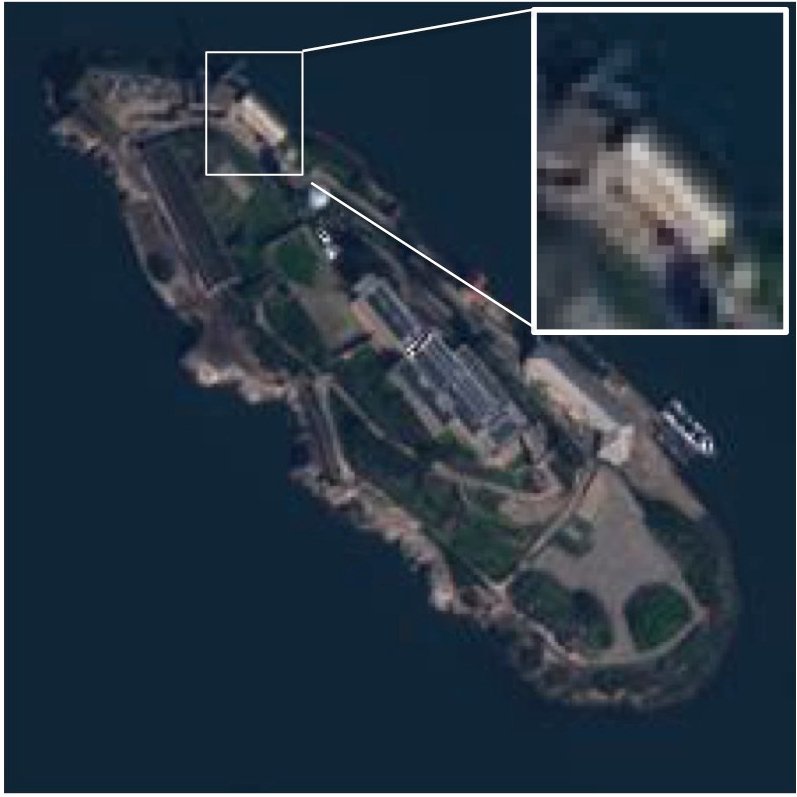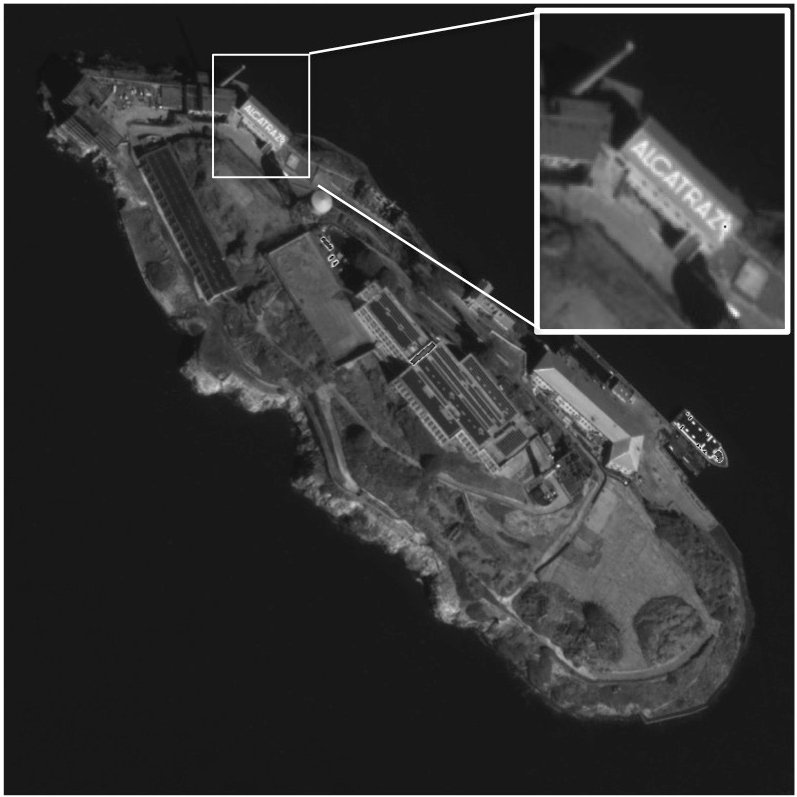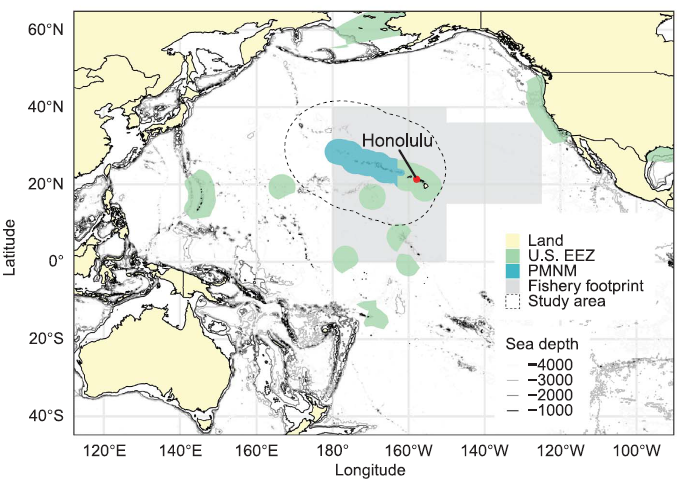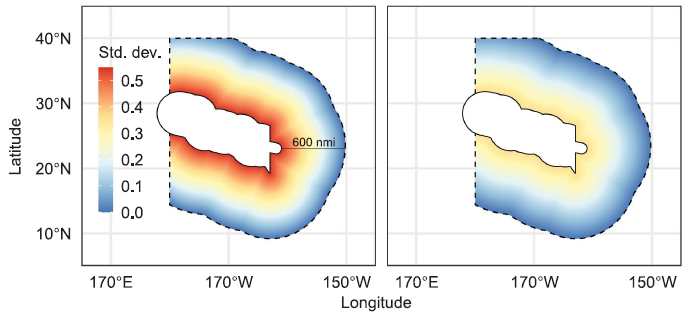Farallon Institute Newsletter - Winter 2022
New FI postdoctoral researcher Dr. Helen Killeen.
Around The Office
In October, Farallon Institute welcomed its newest postdoctoral researcher, Dr. Helen Killeen, after completing her doctorate in Ecology at the University of California, Davis. Helen worked with Farallon Institute previously as a California Sea Grant trainee on a project to determine how the 2014–2016 marine heatwave and El Niño impacted krill populations off the coast of California. Beyond krill, Helen's doctoral work investigated the intricate biophysical relationships between plankton and ocean physics that are important for coastal food web and population dynamics. Her work at Farallon Institute will focus on using a newly expanded global seabird breeding success database to evaluate how climate-drive ocean stratification (vertical layering of the ocean water column) influences seabird population dynamics. You can read more about Helen here.
An important year-end note from Executive Director Jeff Dorman:
As we wrap up 2022, I’m asking you to please consider making a tax-deductible donation to Farallon Institute. Our research makes a difference in ocean conservation and we’d love to have you join us.
Your support will help us do oceanographic research that directly helps us conserve ocean resources and use them sustainably. Your gift gives us the flexibility to direct funds toward critical research in our areas of expertise: climate change impacts on marine ecosystems, predator-prey dynamics, and changes in top predator populations.
Some highlights from our scientists this year:
Farallon Institute research into whales and fishing gear entanglement is helping California adaptively manage to avoid these deadly encounters.
Our scientists led a National Marine Sanctuaries Ship Strike Working Group aimed at decreasing the risk of ships injuring and killing endangered humpback and blue whales on the US West Coast.
Farallon Institute research on climate change is helping us understanding how California’s Marine Protected Areas need to adapt in the face of changing climate.
Please donate today and support ocean conservation. Thank you!
Jeff Dorman
State of the Ocean — Central-Northern California
This year we have started winter with an early bang! After a very windy and cold upwelling spring season, a somewhat warm summer, and a short, warm fall, we have plunged into winter storm conditions. This is bringing much needed rain to California and cold enough temperatures to deliver snow to the Sierra Nevada mountains. The California nearshore ocean has also been in a cool water state since late October. Farther offshore in the Northeast Pacific, there is a large area of warm water (see figure), but it is not currently advancing towards the coast. This is taking place despite our third consecutive winter in La Niña conditions in the tropical eastern Pacific, which typically means poor rain conditions in California. The forecast for next year is for the reign of La Niña to be over, and maybe even switch to a mild El Niño. For now, enjoy this refreshing rain!
Figure provided by NOAA marine heatwave tracker.
Alcatraz Island, site of a long-term seabird breeding study, from space in color (left; 1.2-m resolution) and panchromatic (right; 0.3-m resolution).
Whales, seabirds, and krill from space!
Observing the ocean from space has been going on quite a long time. For almost 50 years we have been using sensors to measure ocean temperature, the height of the ocean, and ocean color (a proxy for suspended sediments and phytoplankton). Over those years the spatial resolution of satellite observations has greatly improved, from kilometers, to tens of meters, to at present less than a meter resolution! We can now see individual objects (cars, bikes, people, etc.) from space!
Scientists are excited about this potential for assessing animal populations and habitat from space. Farallon Institute has begun working closely with NASA to do this sort of research: we aim to monitor whale, seabird, and even krill populations in our coastal oceans.
The work on whale populations ties in with our research efforts on endangered whales and their deadly interactions with ships and fishing gear. The seabird work will fill gaps in our long-term monitoring of Alcatraz Island due to the 2020 COVID-19 restrictions. And the idea of monitoring small crustaceans like krill, that can swarm at the surface of the ocean and turn it a shade of pink, is almost unfathomable. The work we are doing will provide a proof of concept that satellite observations can be used to monitor populations of all of these animals despite their great differences in size. These methods can then be applied to more remote areas of the ocean that are currently not surveyed due to the difficulty and expense of getting “boots on the ground” to do the work. These new remote-sensing techniques and capabilities will allow a better understanding of ocean habitat and ecosystems in some of the most remote reaches of the world.
Location of the Papahānaumokuākea Marine National Monument in the Pacific Ocean.
Marine Protected Area benefits nearby fish populations
Papahānaumokuākea Marine National Monument (PMNM; see map above) is the largest contiguous marine protected area (MPA) in the U.S. At over 1.5 million km^2, this fully-protected central Pacific reserve, encompassing islands, coastal coral reefs, and deep-water habitats of the NW Hawaiian Islands, protects an astonishing abundance and diversity of tropical/subtropical marine life. Originally designated as a relatively small reserve to protect tens of millions of breeding seabirds, the MPA was recently expanded to its current size. Establishing MPAs is controversial, especially large ones like PNMN that may impact coastal societies by limiting economically valuable activities, including fishing. Evidence from a new study by Sarah Medoff and colleagues published in Science magazine suggests, however, that large MPAs can also be a boon to fisheries.
This study demonstrates that the 2016 PNMN expansion precipitated what is known as a “spill-over” effect: protection afforded by the MPA generates higher densities of fish within the reserve that then spill over into fishable areas adjacent to the reserve. Spill-over has been notoriously difficult to detect, particularly for highly mobile species like tuna, but this research does so by comparing tuna catch data from before and after the 2016 expansion. In the figure below, catch (expressed in standard deviations above the pre-expansion average; warmer colors mean higher landings) for both yellowfin (left panel) and bigeye tuna (right panel) was higher up to about 300 nautical miles (~345 miles) from the reserve after the MPA expansion (shown by the solid black line).
This new information adds to the body of work demonstrating that even partial protection of species’ home ranges can result in major conservation benefits for marine wildlife populations. Certainly, there is more to be done to better understand ecological functions within and beyond Papahānaumokuākea, including investigating the effects of protection on seabirds and nearshore predatory fish, such as ‘ulua and sharks, that also call Papahānaumokuākea’s remarkable coral reefs home.






